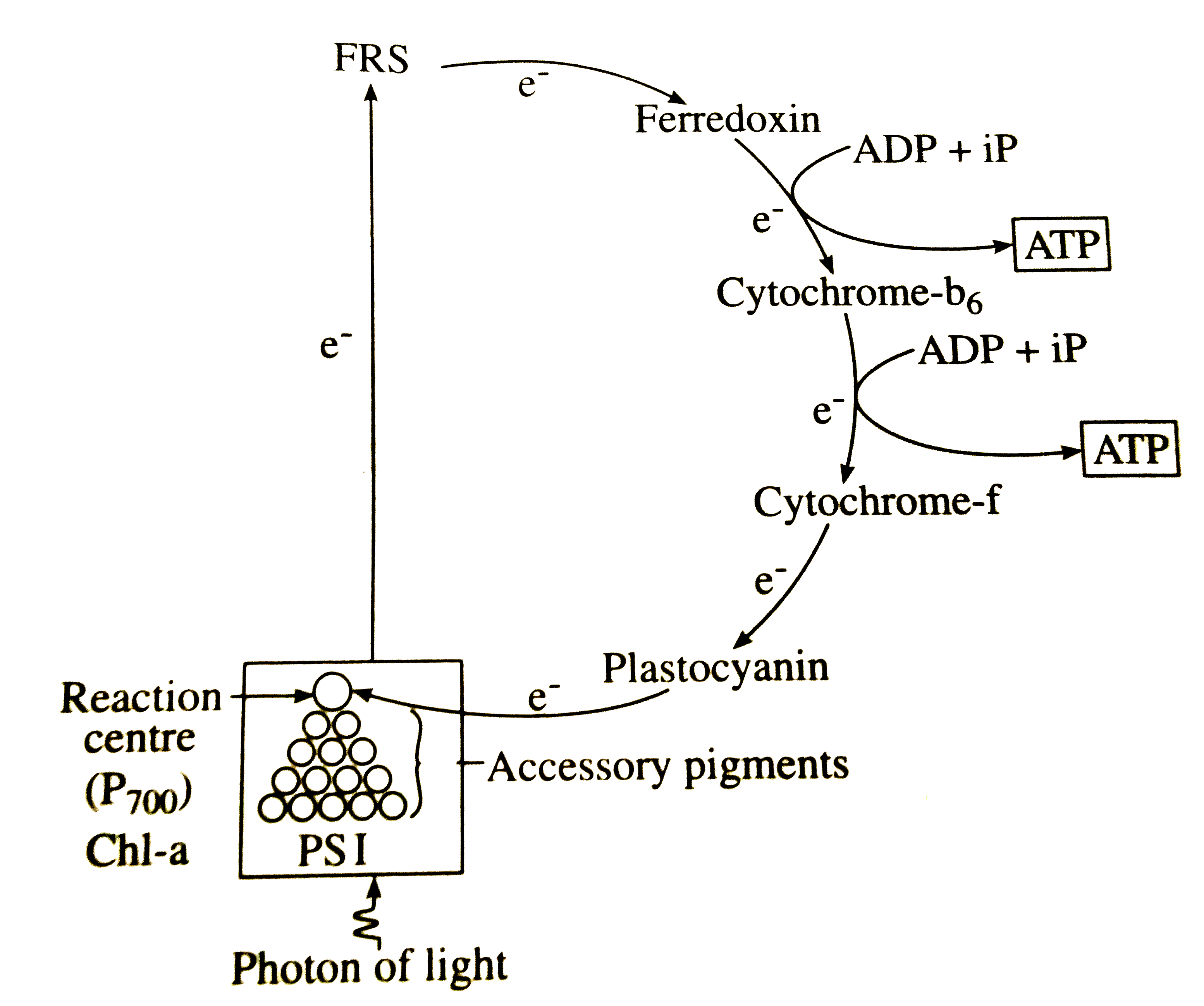Give an account of cyclic photophosphorylation.
Text Solution
(1) Cyclic photophosphorylation is a kind of photophosphorylation in which the expelled electrons return back to the reaction centre following a cyclic path, in which the light energy is absorbed by photosynthetic pigments in light harvesting complex associated with photosystem I (PS I).

(2) The light energy thus absorbed is transferred to P700 As a result of this P700 is excited and expels energy rich electrons making it positively charged.
(3) The expelled electrons are initially captured by FRS (Ferredoxin reducing substance). From which it passes the electrons to an iron containing red protein called Fd (Ferredoxin).
(4) From ferredoxin, the electrons then pass through a series of electron acceptors and donors such as cytochrome-b6, cytochrome-f and plastocyanin (Pc).
(5) From plastocyanin, the de-energized electrons are transferred to P700
(6) During the transfer of electrons from ferredoxin to cytochrome-b6 and from cytochrome-b6 to cytochrome-f, the energy from electrons is released. The energy thus released is utilized for the synthesis of ATP from ADP and iP as shown under :
ADP+ iP→ ATP where iP is inorganic phosphate.
|
Topper's Solved these Questions
- SHORT ANSWER QUESTIONS -IIBOOK - NAVNEET PUBLICATION - MAHARASHTRA BOARDCHAPTER - SHORT ANSWER QUESTIONS -IIEXERCISE - Ch-7 (Respiration)
4 Videos
- SHORT ANSWER QUESTIONS -IIBOOK - NAVNEET PUBLICATION - MAHARASHTRA BOARDCHAPTER - SHORT ANSWER QUESTIONS -IIEXERCISE - Ch-8 (Reproduction in Plants)
6 Videos
- SHORT ANSWER QUESTIONS -IIBOOK - NAVNEET PUBLICATION - MAHARASHTRA BOARDCHAPTER - SHORT ANSWER QUESTIONS -IIEXERCISE - Ch-5 (Microbes in Human Welfare)
2 Videos
- SHORT ANSWER QUESTIONS -I BOOK - NAVNEET PUBLICATION - MAHARASHTRA BOARDCHAPTER - SHORT ANSWER QUESTIONS -I EXERCISE - Chapter 19 : Organisms and Environment - II
7 Videos
- SHORT NOTES BOOK - NAVNEET PUBLICATION - MAHARASHTRA BOARDCHAPTER - SHORT NOTES EXERCISE - Short notes on
2 Videos
Similar Questions
Knowledge Check
In non-cyclic photophosphorylation
AATP is systhesised onlyBLast electron acceptor is ferredoxinCNADP reductase activity reqires H+ from stromaDThere is involvement of PS-I onlyCyclic photophosphorylation involves
APS IBPS IICPS I and PS IIDPCyclic photophosphorylation involves
APSI lBPS IICPS I and IIDnone
